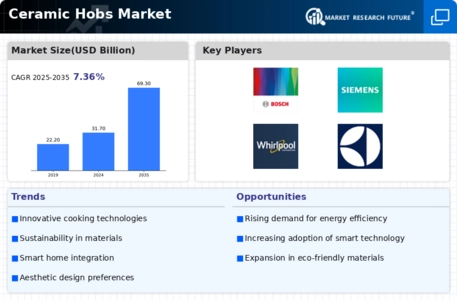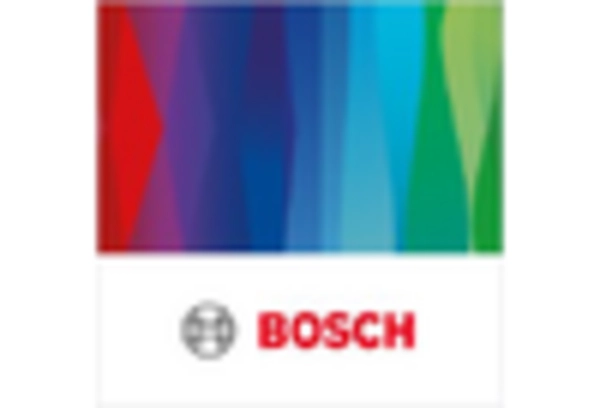Rising Demand for Energy Efficiency
The Ceramic Hobs Market experiences a notable increase in demand for energy-efficient cooking solutions. As consumers become more environmentally conscious, they seek appliances that minimize energy consumption. Ceramic hobs, known for their efficient heat distribution and quick heating capabilities, align with this trend. According to recent data, energy-efficient appliances can reduce energy usage by up to 30% compared to traditional options. This shift towards energy efficiency not only appeals to eco-conscious consumers but also aligns with governmental initiatives promoting sustainable living. Consequently, manufacturers in the Ceramic Hobs Market are increasingly focusing on developing products that meet these energy standards, thereby enhancing their market appeal.
Consumer Preference for Aesthetic Appeal
Aesthetic considerations significantly influence purchasing decisions in the Ceramic Hobs Market. As consumers prioritize kitchen design and aesthetics, manufacturers are responding by offering ceramic hobs in various colors, finishes, and styles. This trend reflects a broader movement towards personalized home environments, where consumers seek appliances that complement their interior design. Market data reveals that a considerable percentage of consumers are willing to pay a premium for visually appealing kitchen appliances. Consequently, manufacturers are investing in design innovations to enhance the aesthetic appeal of their ceramic hobs, thereby attracting a wider customer base and driving growth in the Ceramic Hobs Market.
Increasing Health Consciousness Among Consumers
The growing awareness of health and wellness among consumers is impacting the Ceramic Hobs Market. As individuals become more health-conscious, they seek cooking methods that preserve nutrients and promote healthier eating habits. Ceramic hobs, which allow for precise temperature control and even cooking, are perceived as a healthier option compared to traditional cooking methods. This trend is supported by Market Research Future indicating that consumers are increasingly interested in cooking appliances that facilitate healthier meal preparation. As a result, manufacturers in the Ceramic Hobs Market are likely to emphasize the health benefits of their products, potentially leading to increased sales and market growth.
Technological Innovations in Cooking Appliances
Technological advancements play a crucial role in shaping the Ceramic Hobs Market. Innovations such as touch controls, smart connectivity, and advanced safety features are becoming increasingly prevalent. These technologies enhance user experience and safety, making ceramic hobs more appealing to consumers. For instance, the integration of smart technology allows users to control their cooking appliances remotely, providing convenience and efficiency. Market analysis suggests that the adoption of smart cooking appliances is on the rise, with projections indicating a substantial increase in sales over the next few years. This trend underscores the importance of continuous innovation within the Ceramic Hobs Market to meet evolving consumer expectations.
Growth in Urbanization and Compact Living Spaces
Urbanization continues to drive changes in consumer behavior, particularly in the Ceramic Hobs Market. As more individuals move to urban areas, the demand for compact and multifunctional kitchen appliances rises. Ceramic hobs, with their sleek designs and space-saving features, cater to the needs of consumers living in smaller apartments. Market data indicates that urban populations are expected to increase significantly, leading to a higher demand for efficient cooking solutions. This trend encourages manufacturers to innovate and create ceramic hobs that not only save space but also offer advanced features, thus enhancing their competitiveness in the Ceramic Hobs Market.


















Leave a Comment